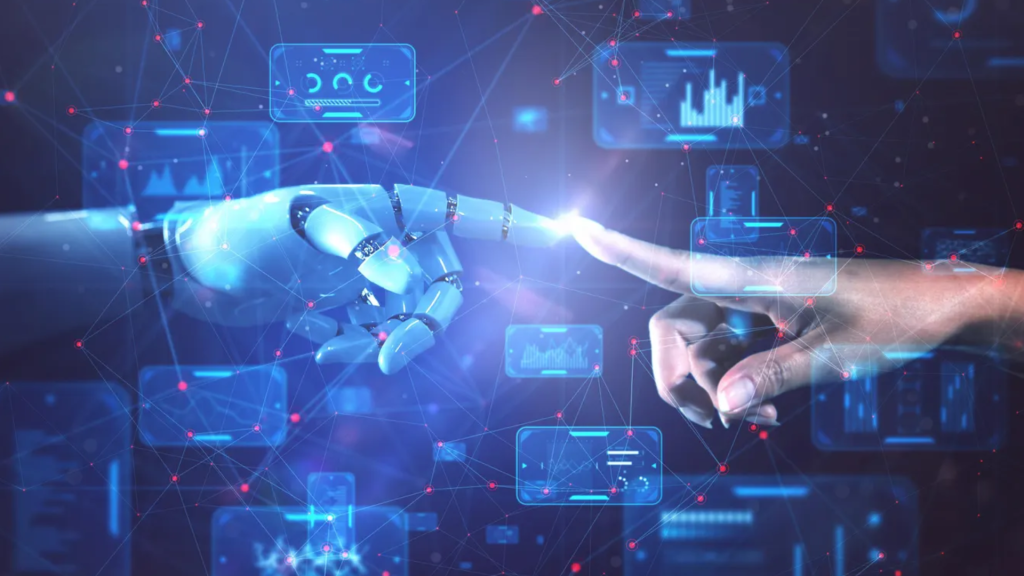Technology is a big part of our lives. We use it every day—on our phones, in our cars, while shopping, learning, or even relaxing at home. But there’s a lot more to tech than what we see on the surface.
Some technology facts are weird, some are smart, and others are just fun to know. From robots that can think to the first computer made of wood, the world of technology is full of surprises.
This blog shares a variety of interesting and easy-to-understand facts about technology.
Whether you are into history, space, or smart gadgets, you’ll find something here that makes you say, “Wow, I didn’t know that!”
History of Technology Facts
1. The very first mobile phone call was actually made by Martin Cooper in 1973, not 1983. The Motorola DynaTAC was indeed large and expensive.
2. In 2011, a computer program named Watson defeated two human champions on the quiz show. Watson utilized artificial intelligence to process questions and quickly search vast amounts of data for answers.
3. The world’s first computer programmer was Ada Lovelace, a woman. In the 1840s, she wrote instructions for calculating Bernoulli numbers on Charles Babbage’s theoretical Analytical Engine, making her the first person to create what is now known as a computer algorithm.
4. The first internet connection between computers was established in 1969. It was called ARPANET, and it enabled the sharing of information between two computers located in different parts of the U.S.
5. The first computer virus, Creeper, was created in the 1970s. It moved between mainframe computers and displayed the message, “I’m the creeper, catch me if you can.”
6. Bluetooth, which connects wireless devices, is named after Harald Bluetooth, a Viking king. He united Denmark and Norway, symbolizing how Bluetooth unites devices.
7. The world’s first website, created by Tim Berners-Lee, is still online today. It was launched in 1991 and is a simple page explaining how the internet works.
8. The first computer mouse was made of wood. Created by Douglas Engelbart in 1964, this prototype featured two wheels positioned at right angles to track movement and a single button. Modern mice now use optical technology instead of mechanical parts
Artificial Intelligence and Robotics Facts
9. Sophia, a humanoid robot, became a Saudi Arabian citizen in 2017, making her the first robot to receive citizenship in the world, sparking debates about the rights and recognition of AI.
10. In 2020, an AI called MuZero mastered chess, shogi, and Go without being taught the rules. Unlike previous game-playing AIs, it learned purely through self-play, demonstrating a new level of machine learning capability
11. Self-driving cars use AI to “see” the road with cameras, sensors, and algorithms. These cars are continually improving and may soon make driving safer and more convenient for everyone.
12. Robots have been helping humans for a long time. In the 1960s, a robot called Unimate was the first to work in a factory, assisting with tasks such as welding car parts.
13. AI-powered robots can assist in surgical procedures. A robot named “Da Vinci” is used in hospitals worldwide, assisting surgeons with precision and performing minimally invasive procedures.
14. Robots can assist with space exploration. NASA’s rover, Curiosity, landed on Mars in 2012 and has been sending back valuable data about the planet’s surface and atmosphere.
15. The first AI in a video game was introduced in 1951. Bertie the Brain, a computer system designed to play tic-tac-toe, was shown at the Canadian National Exhibition.
16. In 2016, researchers developed an AI that could read and understand emotions based on human facial expressions, making it a valuable tool for enhancing customer service and user interaction.
Space and Aerospace Technology Facts
17. SpaceX’s Falcon Heavy rocket, launched in 2018, is the most powerful operational rocket in the world. It can carry large payloads into space, opening up possibilities for Mars missions.
18. The Hubble Space Telescope, launched in 1990, has provided beautiful images of deep space. It has helped scientists understand the universe and discover new planets and galaxies.
19. The International Space Station (ISS) orbits Earth at about 28,000 kilometers per hour, traveling around the planet every 90 minutes. It has been in orbit since 1998.
20. The first humans to walk on the moon, Neil Armstrong and Buzz Aldrin, did so in 1969 during NASA’s Apollo 11 mission, marking a historic achievement in space exploration.
21. The Voyager 1 spacecraft, launched in 1977, is the farthest human-made object from Earth, having traveled more than 22 billion kilometers. It continues to send data from deep space.
22. In 2013, the European Space Agency launched the Rosetta mission, which successfully landed a probe on a comet for the first time in history, providing valuable data on comet composition.
23. Smartphones use an integrated GPS system that relies on satellites orbiting Earth every day. GPS tracks your location, aids navigation, and has become essential for many daily activities.
Every Day Smart Tech Facts
24. Voice assistants like Siri and Alexa are powered by AI that can understand and respond to natural language. They have become common tools for controlling smart devices and managing tasks.
25. Smart refrigerators can track the food inside and notify you when items are running low or about to expire. Some models can even suggest recipes based on available ingredients.
26. Smartwatches not only tell the time but also track health data, monitor heart rate, and even alert emergency services in case of a fall or health emergency.
27. The first webcam was created at Cambridge University in 1991 to monitor a coffee pot. Computer scientists set it up to avoid making unnecessary trips to an empty coffee machine, demonstrating how technology often develops from solving simple everyday problems
28. Smart thermostats, like the Nest, learn your schedule and adjust the temperature in your home based on your habits, making them energy-efficient and saving you money on heating and cooling.
29. Augmented reality (AR) apps let you view digital information overlaid onto the real world. Popular apps like Pokémon Go use AR to interact with your surroundings in fun ways.
30. The world’s first fully solar-powered plane, Solar Impulse 2, completed a round-the-world journey in 2016. The aircraft had a wingspan wider than a Boeing 747 but weighed only as much as a car, demonstrating the potential of clean aviation technology
31. The concept of virtual reality dates back to the 1950s, but the first VR headset wasn’t created until 1968 by computer scientist Ivan Sutherland. Called the Sword of Damocles, it was so heavy it had to be suspended from the ceiling while users were strapped into it.
Environmental and Green Tech Facts
32. Solar power is one of the fastest-growing renewable energy sources. Solar panels convert sunlight into electricity, reducing the need for traditional energy sources and lowering greenhouse gas emissions.
33. The Green Roof movement involves creating gardens on building rooftops to reduce energy costs, improve air quality, and provide green spaces in urban environments.
34. Wind farms generate electricity by harnessing wind power. Some wind turbines can produce enough energy to power thousands of homes, making them a clean energy source.
35. Biodegradable plastic, made from plant-based materials, is an eco-friendly alternative to traditional plastic. It breaks down naturally, reducing pollution and its harmful impact on the environment.
36. Electric bike-sharing programs are gaining popularity in many cities. These programs help reduce traffic, cut emissions, and provide an environmentally friendly mode of transportation.
37. Noise-cancelling headphones use microphones to detect ambient sounds, then generate sound waves that are exactly opposite to cancel them out. This technology, known as destructive interference, was first developed for helicopter pilots in the 1950s before being adapted for consumer use.
38. The use of drones for environmental monitoring is growing. Drones can quickly survey large areas of land and provide valuable data on forests, wildlife, and the impacts of climate change.
39. Electronic ink (E-ink), used in e-readers like Kindle, uses actual particles moved by electric charges to form text and images. Unlike regular screens, it reflects light rather than emitting it, consumes power only when the display changes, and makes it more environmentally friendly.
40. Smart water meters help conserve water by providing real-time data on usage. This technology enables users to track their water consumption and pinpoint leaks, thereby promoting water-saving efforts within households.
41. The average person touches their smartphone about 2,600 times per day, according to research. Heavy users can touch their phones over 5,400 times daily, demonstrating how deeply integrated these devices have become in modern human behavior.
Fun Tech Fact
Some scientists are creating robots made from living cells—called biobots. These tiny robots can move on their own and may one day help clean up pollution or deliver medicine inside the body!




















